St. Ives has a magic all of its own. There are the beaches of golden sand, the quaint narrow streets, the lifeboat pushed into the sea by a tractor and trailer, and the unique light, which has captivated artists for generations. It has its own Tate Gallery and art shops, and attracts artists of all sorts.
As I wandered the narrow streets during a stop on my West Country rail tour, I thought all that was lacking was a Kenny Rogers lookalike strumming his guitar. I found him, minutes later, and his band playing ‘local‘ folk songs to an appreciative audience under the canopy of the empty Woolworths store.
As a small child I spent many a summer holiday playing on the beach below St. Ives station, and watching Great Western ‘Prairie‘ tanks coming and going with their trains of three or four non corridor coaches. I even have a photograph, which I took on my Kodak Brownie camera, of a ‘Prairie‘ banking the ‘Cornish Riviera‘ empty stock out of the terminus, in about 1957.
The St. Ives branch was the last railway built to Brunel‘s broad gauge. It opened in 1877, when the main line had already been changed to mixed gauge. There was a small wooden station at Lelant and a more substantial stopping place built at Porthrepta Bay. The GWR didn‘t like the name and changed it to Carbis Bay.
The junction station for the 41⁄2-mile branch to St. Ives is St. Erth, which these days is the last stop before the end of the line at Penzance. The smart little granite station has two bay platforms on the St. Ives side, set slightly lower than the main up platform. On the platform is the St. Ives Bay Branch Line Shop, a locally run refreshment room and souvenir shop.
Today‘s branch trains are normally Class 150 units, usually two units coupled together. Among those seen during my visit were two former Silverlink 150/1s still in green and mauve, and an Arriva Trains Wales Class 150/2 complete with its bilingual signs. The branch is controlled by single line token from St. Erth signalbox, and the train shuttles back and forth on a roughly half-hourly schedule, giving some 27 trips a day in each direction.
This was a branch slated for closure by Beeching, but strongly resisted by local and regional interests on the grounds that St. Ives’ narrow street system (with long single-file sections and very limited parking space) would not cope with the extra traffic if the railway closed. Nor is it suited to buses, which have to terminate at the tiny bus station, which is a stiff uphill walk from town.
The branch was reprieved by Transport Minister Barbara Castle, and an innovative scheme was developed to use the railway to ease the town‘s traffic problems.
A substantial car park was developed at Lelant Saltings, just off the A30 at St. Erth and alongside the Hayle estuary. Between the car park and the estuary a platform was built, served by St. Ives branch trains. Reasonable parking and ticket prices ensured that holidaymakers would be attracted to park there and make their journey into St. Ives by train.
In doing so, they get to enjoy what I believe to be the best scenic train ride in England, bar none, and that includes the Settle & Carlisle! Park and ride had come to the West Country.
On July 2 2009, the 0938 is formed by FGW 150261 and ex-Silverlink 150127. A large party of pensioners alight at St. Erth off the incoming train, but I‘m the sole passenger to board. A few more join me at Lelant Saltings but not as many as you might expect. Is it too early for trippers?
As we journey alongside the Hayle estuary, the remnants of Hayle‘s dock activities can be seen, including a front-loading car ferry, MV Portree II, which is now operating a long way from home. As the river mouth widens, the full expanse of Hayle‘s three miles of golden sandy beaches can be seen. They are all but deserted.
The DMU starts its climb round the headland towards Carbis Bay and from here on, all the way to St. Ives, there are vistas of blue sea, grey cliffs and golden sand. More than 20 passengers join the train at Carbis Bay, where the railway is already some distance above the beach. Round the next headland, even better views are afforded, this time of St. Ives itself, nestling in the cliffs. Now the train drops steeply downhill, and moments later it comes to a halt in the small platform of St. Ives station surrounded by parked cars, all of which seem to have permanently booked spaces. The journey is simply too short!
For much of its length, particularly between Carbis Bay and St. Ives, the railway runs parallel to a footpath, and the energetic can enjoy some grand views of the trains and the coastal scenery. Carbis Bay station is a typical FGW halt with a modest-sized car park but with its once fine view over the bay obscured by modern housing developments.
Lelant station, its wooden building now a private bungalow, is little used and impossible to find by road unless you know where to look. There are no signposts.
Lelant Saltings, on the other hand, is well signposted from the A30 roundabout west of Hayle, and is easy to find. Surprisingly, the approach road to the car park is through a new housing development. The speed bumps and parked cars don’t make life easy for the motorist, while the constant comings and goings of holidaymakers in their cars can’t make it a great place to live, either. It will soon be replaced by bigger and better facilities including a 600 place car park in the former milk tank yard at St. Erth.
The park-and-ride station itself is no more than a narrow platform. But it is also on a sharp curve which, coupled with the length of vehicles used, leads to one of the widest gaps I‘ve seen between platform and train. If ‘153s‘ with their end doors were used, the gap would be less but the position of the doors on the ‘150s’ leads to gaps reminiscent of those on some Underground stations.
The station is well signed and carries plenty of information boards, including signs indicating the direction of trains. Even this doesn‘t seem to prevent the more air-headed passengers boarding trains going in the wrong direction!
Considering that it teetered on the brink of closure 45 years ago, the St. Ives branch is in good health and doing exactly the job that was intended when it was reprieved from closure. As a result, St. Ives itself remains a major holiday attraction, relatively unspoiled by traffic, and still a joy to visit.
One could wish that the old station had survived, a few hundred feet nearer to town, rather than the present basic platform marooned in a sea of parked cars. But that apart, I used my Freedom of Devon & Cornwall ticket to make the journey three times on consecutive days - magic!
The journey, which is disappointingly but unavoidably brief, offers a view of Cornwall‘s Atlantic coast which is never likely to be available from any road. For anyone who loves English scenery and/or rail travel, it should be compulsory!
The Maritime Line
After St Ives my itinerary left me a day without railways, to explore the far west and find my way to those iconic mine engine houses on the cliffs at Botallack, near St. Just. So I was on my way home when I called in at Truro to visit the Falmouth branch.
Truro station was in a bit of a pickle. The previous night there had been one of those exceptional summer storms. Heavy rain had found its way through the station roof, somewhere near the join between the old GWR building and the modern booking hall. A sign on the ticket office door said ‘Closed due to flooding‘ and, peering inside, I could see men with barrows collecting the remains of the ceiling off the floor. Tickets were being dispensed from the former porters‘ room on the platform.
The Falmouth branch is a bit different. First and foremost, it is primarily not a scenic railway to a holiday resort. It links Cornwall‘s county town (and only city), Truro, with one of Britain‘s major but oft-forgotten ports.
Though not big in terms of freight landed, Falmouth‘s natural harbour is a major refuge for shipping inbound from the Atlantic and for storing and repairing merchant ships. In the Victorian era Falmouth was developed as an up-market resort, but its size and its industrial and docks areas means that it lacks the quaint attractiveness of Looe and St. Ives.
Falmouth station opened in 1863 and was closed in 1970, in the aftermath of Beeching, when the branch was cut back to a new station nearer the town centre. Built by the Cornwall Railway, the branch from Truro had three intermediate stops, Penryn (resist the temptation to insert the Welsh ‘h‘) and Perranwell, and a halt at Penmere added by the GWR. The branch had several substantial timber viaducts designed by Brunel, Collegewood viaduct at Penryn being the last to be replaced by a permanent masonry structure in the 1930s.
In 1975 one platform of the original terminus was brought back into use as Falmouth Docks station, and the 1970 station was renamed Falmouth Town. It was, perhaps, the first sign of a revival of fortunes for the branch. Devoid of freight traffic, despite Falmouth‘s industries and docks, the branch has become something of a ‘commuter‘ line and in recent months a scheme has been completed to provide extra train paths and overcome capacity issues.
The key to this is the provision of a new passing loop at Penryn, enabling a 30-minute interval service with the branch‘s nominal pair of Class 153s now operating as two single cars. This arrangement has been necessary because 1970s rationalisation of Penwithers Junction, where the branch leaves the main line at Truro, means that branch trains now have to run for a considerable distance over the down main line to reach the bay platform at Truro. In the case of up branch trains, this means they are effectively running ‘wrong line‘. The number of paths available on the branch is thus affected by the capacity of this section of the main line.
FGW now markets the Falmouth line as ‘The Maritime Branch‘ and I make my first encounter with the modernised branch in thick mist. I catch the 1355 to Falmouth Docks, renewing acquaintance with 153368.
Little about this line is ‘touristy‘ but the scenery is deep green, even through the Cornish mist. Having turned away from the main line, we clip along at a fair pace before plunging into Sparnock tunnel. Next comes Carnon viaduct and the ‘153‘ is distinctly happier on this branch, without the sharp curves of Looe or Gunnislake to make it scream. There‘s even continuous welded rail for some stretches and a 50mph speed limit.
This is hill country with steep-sided valleys, and there‘s Perranwell station and Perran tunnel and viaduct before we enter the new loop at Penryn. Here, we run through the former up platform, still derelict, before swinging over to stop at the south end of a new platform. Somewhat bemused by this arrangement, I return later to examine it more closely. In fact, it is an ingenious solution to the problem of providing disabled access without expensive lifts and bridges.
Ironically, it re-introduces the Brunel station design where both platforms were on the same side of the line. In this instance, up and down platforms are on the ‘down‘ side of the line, adjacent to a large car park. Direction signs are provided to show clearly which part of the platform serves which direction. The only disadvantage that I could see is a lengthy fenced stretch in the middle of the platform, (which is alongside the turnout and cannot be used by trains in either direction) and the disused and wasted old up platform. Penryn station is signed for the local university campus, which evidently generates a great deal of traffic during term time.
Signalling the passing loop without a local signalbox was clearly a challenge, and again the solution is ingenious. Points and signals are controlled electronically from Truro‘s classic GWR signalbox by way of a lineside receiver station. Signals are single-lens, multiple-aspect LED heads and a key token cabinet is provided on the platform. The result, paid for by local and European grants, is a frequent and quick service which has seen the inevitable increases in passenger numbers.
On leaving Penryn the large Collegewood viaduct is crossed. At Penmere there‘s another of those standard FGW halt shelters with its neat wooden awning. Here, as on the Looe branch, the signs and colour scheme are 1950s chocolate and cream, and there’s even a modern version of the Great Western’s ‘spear‘ iron railings. The transformation here is at the behest of a local users‘ group. Less attractive is Falmouth Town station, just a halt with another of those ubiquitous shelters.
Fewer than half a dozen passengers are left as we draw to a halt in Falmouth Docks, besides the last remnant of the curved-roof original station awning. Some tall offices and apartment blocks surround the station. The car park is all but empty.
The station is unstaffed and devoid of facilities. A sign advises passengers to buy tickets on the train and to buy season tickets from Par station. Why not Truro, which is much nearer? There are no signposts, and having failed to correctly identify a route back to town, I opt for a quick look round the Lifeboat gift shop and a peek at the docks. Prominent is a large vessel with US Coastguard markings.
Back at the station I check the Help Point, out of curiosity. The recorded message says the next train is the 1450 to Truro, ten minutes after it has left. As at Bere Alston earlier in the week, the Help Point ‘facility‘ is no help at all. At this point, my notebook says: ‘nothing makes me want to come back to Falmouth.’ A small group of men appear and study the timetable posters. They are cruise ship passengers, spending their last afternoon ashore in Falmouth before returning to the ship for the night and then making their way home to London tomorrow. I do my railway PR job, negotiating them through the timetable, but I end up recommending that they get a taxi into Truro to start their journey home.
From this encounter it appears that cruise ships not only call at Falmouth but they actually board and disembark passengers through the docks at a terminal about 200 yards from the station. It beggars belief that there‘s no joined-up system between the railway, Falmouth Docks and the cruise operators to ensure that cruise passengers can and do make use of rail travel. Perhaps an attractive cruise terminal and a covered walkway to the station is too much to ask, but it‘s not difficult to imagine how good - and lucrative - such an operation might be. After all, where else in Cornwall can cruise passengers be landed so easily?
As I take my leave of Falmouth by train, I witness another fine piece of customer service by the FGW conductor, assisting a Penryn passenger with a formidable load of luggage. The one consistent factor throughout my week in Cornwall has been the FGW staff - always helpful, efficient and a pleasure to travel with. Similarly, FGW stations have varied from clean and smart to the absolutely spotless. A pity that the immediate surroundings at Newquay and, to a lesser extent, Falmouth Docks, let them down.
I have a concern, however, and that is the total lack of flexibility now that these branches have been reduced, in the main, to what we would once have called ‘a long siding‘.
Replacement of infrastructure at Penryn has seen increased services bringing more passengers - and it only opened in May this year! On the Newquay, Gunnislake and Barnstaple lines operating flexibility has been completely removed (Looe never really had any) and it is unlikely that any more train paths could be created without another expensive Penryn-style exercise. Some Barnstaple trains are already overcrowded. Someone has an interesting conundrum to resolve if traffic on these lines is to continue to increase, as it must.
Travelling the West Country branch lines is a great way to spend a week, especially with the bonus of an Okehampton-Meldon ride on Dartmoor Railway‘s Class 205 ‘Thumper’ unit on the way home. Next summer, I‘ll try for some china clay trains on the Fowey branch...

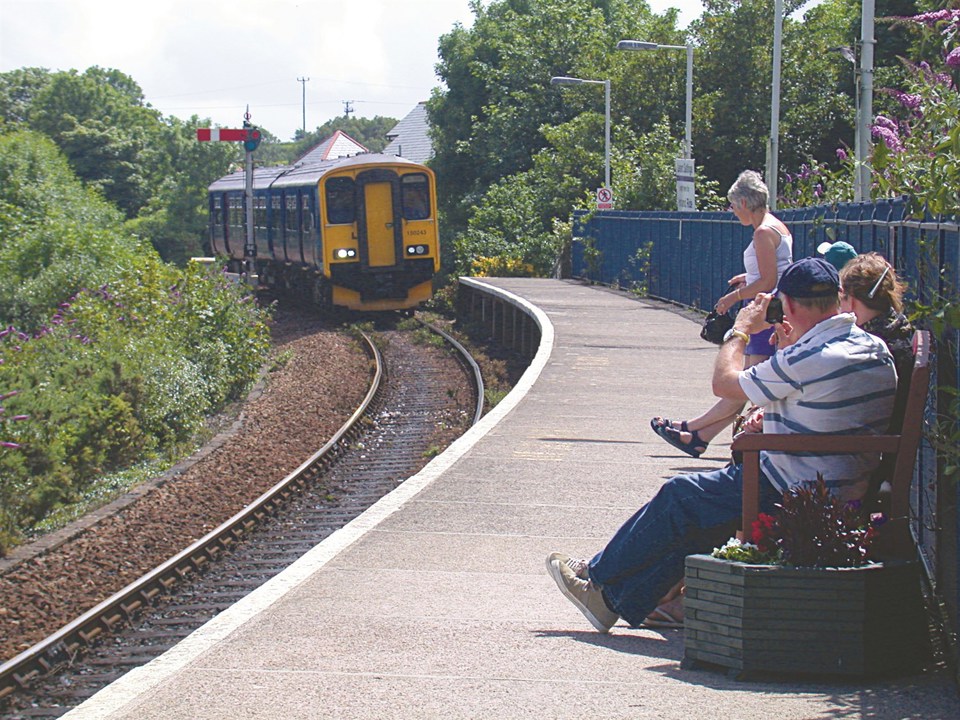
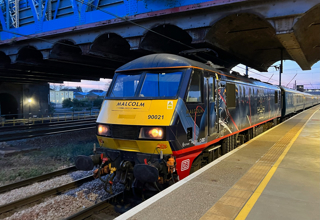
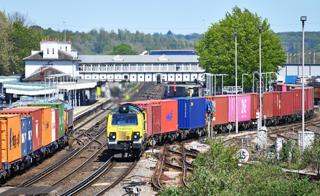
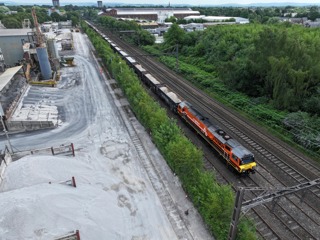
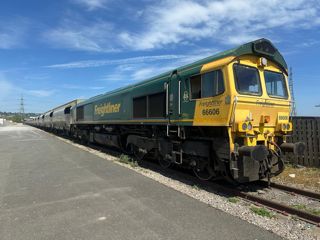
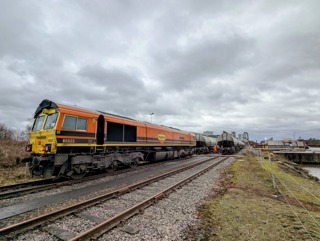










Login to comment
Comments
No comments have been made yet.